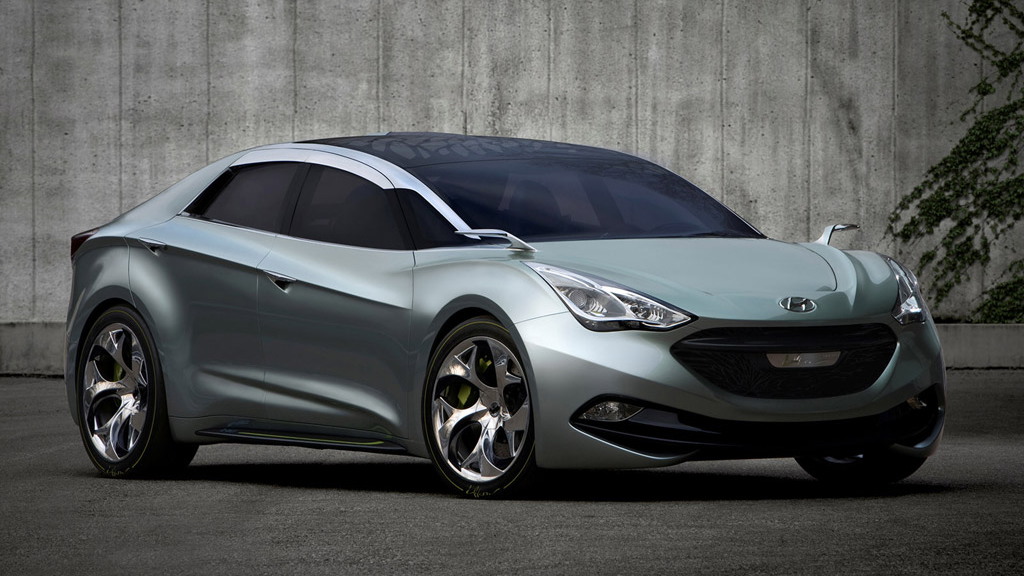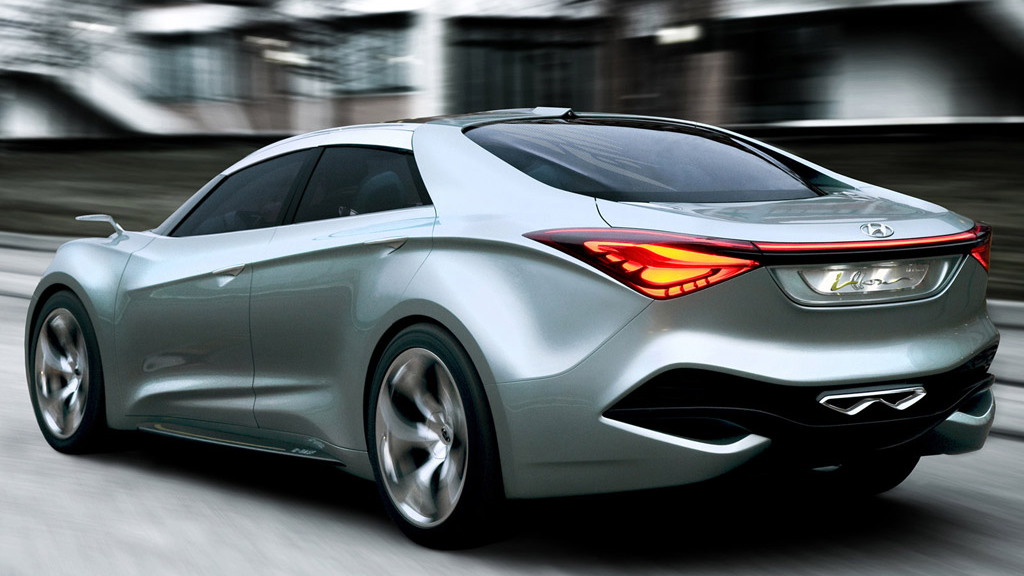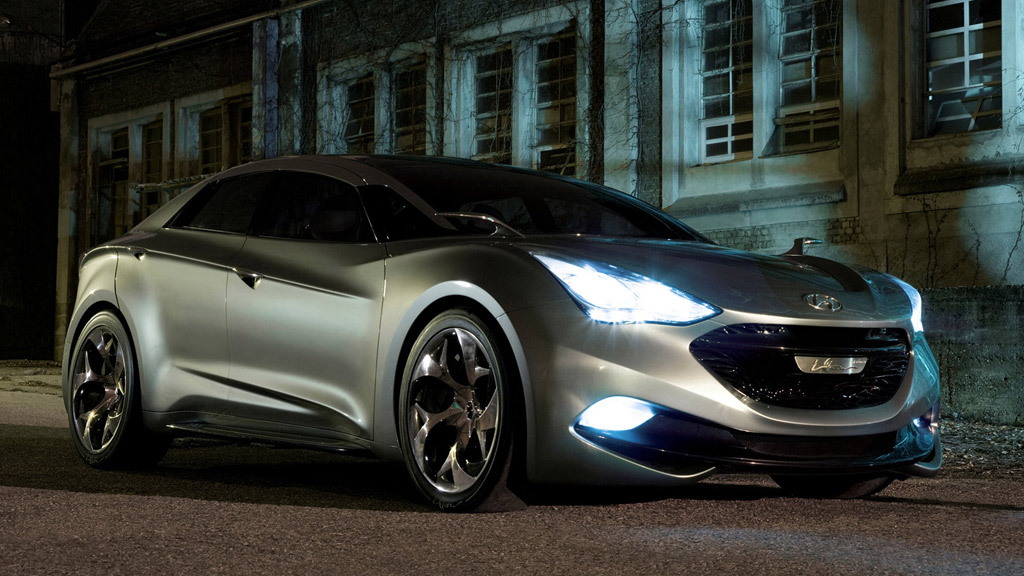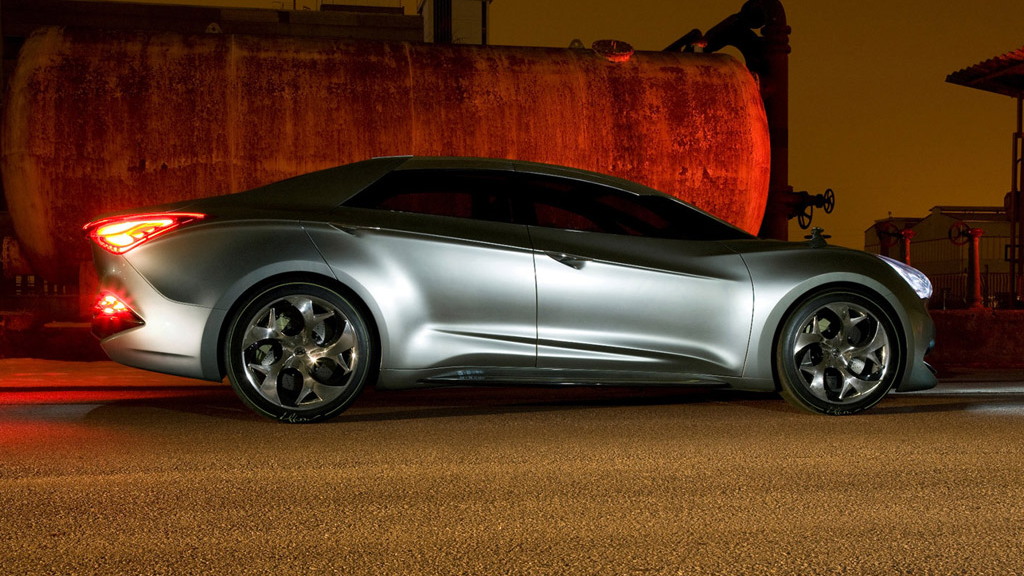The Hyundai Genesis Sedan, the recently-unveiled all-new Sonata, and the upcoming executive-class Equus are reshaping Hyundai's lineup from budget South Korean automaker to world-class player. The next car, previewed with the i-flow Concept at this week's 2010 Geneva Motor Show, is due in 2011 and will likely replace the current Azera (Grandeur) sedan.
Packaged as a family sedan one notch higher than the Sonata, the current Azera sticks out a bit from the rest of the new lineup, even with the updates received at the Chicago Auto Show. The replacement matches the Sonata step for step in design, and Hyundai credits the impressive look to its Russelsheim design HQ in Germany. High-tech materials from BASF help to minimize weight and maximize efficiency--including the use of solar cells.
The name i-flow reflects the aerodynamic shape and the flowing lines of the concept car's styling, and retains the 'i' prefix of Hyundai's established alphanumeric nomenclature for Europe. The concept features Hyundai’s first diesel-electric hybrid drivetrain consisting of a twin-turbocharged 1.7-liter diesel engine matched to an electric motor running on lithium-polymer batteries. Sending drive to the front wheels is a six-speed dual clutch transmission. The vehicle also benefits from a slippery 0.25Cd drag coefficient, which sees it register a fuel economy of 78 mpg.
To further enhance fuel economy, engineers have developed thermal engine encapsulation, which ensures that the engine reaches optimum operating temperature more quickly, by retaining heat when the car is at idle. Where a non-insulated engine can go gold in around three hours, the i-flow Concept will stay warm for 14 hours. This translates into fuel savings and emissions cuts of five percent during summer and up to nine percent during winter.
Other features include a thermo-electric heat energy recovery system on the exhaust that’s used to power ancillary features, adaptive aerodynamic elements and an eco-driving guidance system that includes fuel consumption and gear shift indicators, and an active ECO function which adjusts the powertrain to its ultimate condition by adapting the engine and transmission control units. Finally, 'eco route' uses real-time traffic conditions and three-dimensional road data to calculate the most fuel-efficient way of reaching a desired destination.
[Hyundai]






